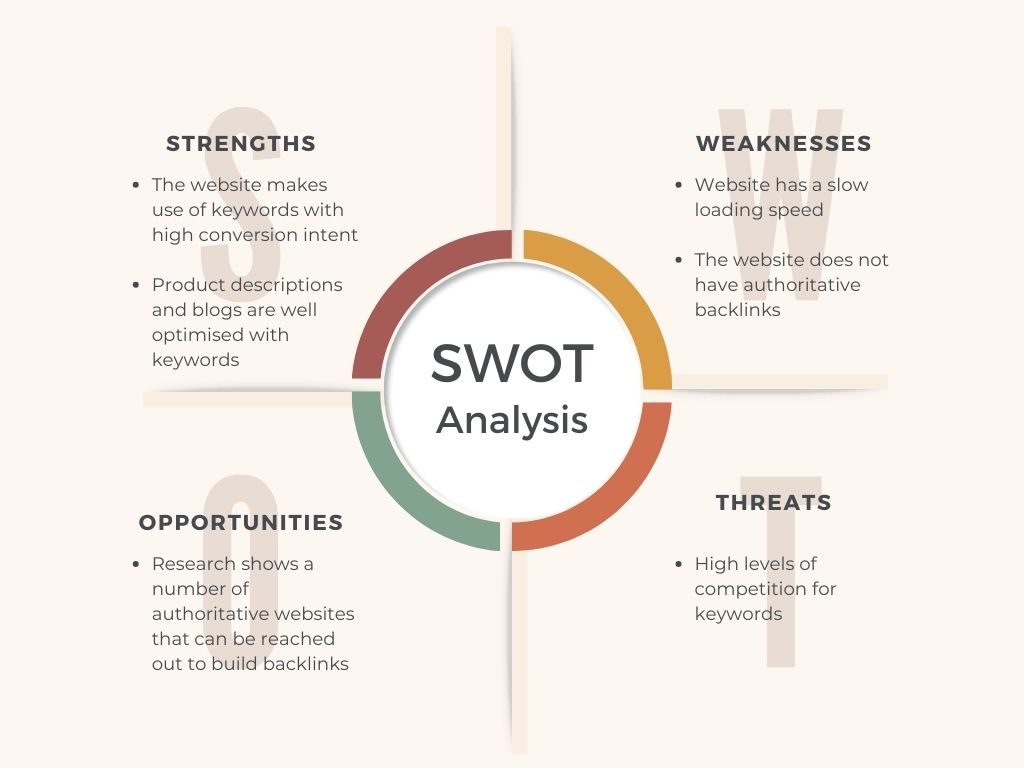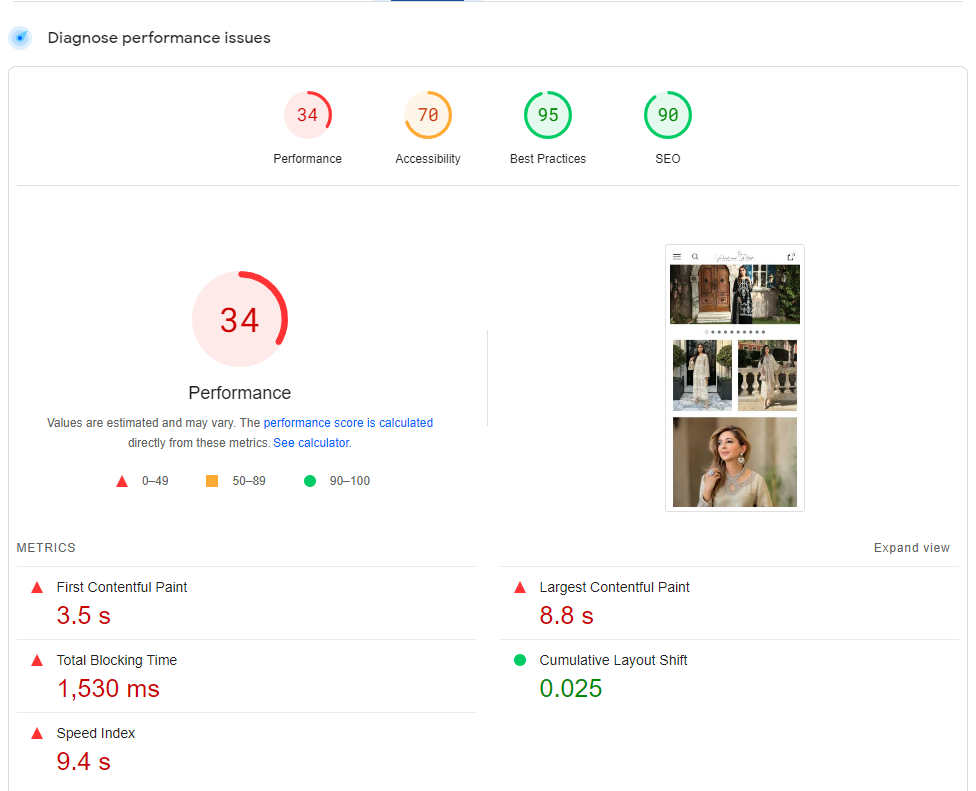Understanding SEO
The term “SEO” is tossed around quite liberally in the digital marketing world, but what exactly is it? SEO, or Search Engine Optimization, is the art and science of optimizing a website to be discovered by search engines, enhancing its visibility, and thus increasing organic (unpaid) web traffic. But to truly grasp its essence, one must dive into its diverse types, technicalities, and the ethical considerations behind its tactics.
History of SEO: Evolution Over the Years
The journey of SEO commenced in the 1990s when search engines initially cataloged the web. Initially, it was a simple process: stuff your website with relevant keywords, and voila! You topped the search results. However, as the internet expanded, search engines like Google launched complex algorithms to provide users with more accurate and relevant results. For instance, the Google Panda update in 2011 penalized websites with poor-quality content, marking a shift towards valuing user experience and quality content. Over time, these algorithms have become smarter, integrating artificial intelligence and machine learning, necessitating businesses to continually evolve their SEO strategies.
Types of SEO: On-page, Off-page, and Technical
Understanding the different types of SEO is essential for a holistic optimization strategy:
- On-page SEO pertains to all the measures taken within your website to improve its position in search rankings. This includes keyword optimization, quality content creation, meta tags, and more.
- Off-page SEO revolves around external signals and links pointing to your site from other websites. This includes backlink building, social signals, and other off-site practices that bolster your site’s reputation and authority.
- Technical SEO is all about ensuring your website meets the technical requirements of modern search engines, ensuring optimal crawling. Speed optimization, mobile-friendliness, XML sitemaps, and structured data fall under this umbrella.
Importance of White-hat vs. Black-hat Techniques
Here’s where ethics come into play:
- White-hat SEO involves using techniques and tactics that adhere to search engine guidelines. Examples include producing high-quality content, improving site speed, and building organic backlinks. This approach is sustainable and focuses on providing real value to website visitors.
- Black-hat SEO, on the other hand, exploits search engine guidelines, employing manipulative tactics to gain quick rankings. Keyword stuffing, using hidden texts, and creating doorway pages are examples. While it might offer quick results, it’s risky, and penalties can be severe, ranging from ranking drops to website blacklisting.
A common misconception many have is believing SEO to be a one-time setup. In reality, with the ever-evolving algorithms and search patterns, it’s an ongoing process. Another pitfall businesses often encounter is chasing after every new SEO “trick” they come across. It’s essential to remember that genuine value, user experience, and adhering to guidelines are more beneficial in the long run than quick fixes.
Preliminary Steps Before SEO: Setting the Groundwork for Success
When crafting an effective digital marketing strategy, it’s imperative to understand that SEO isn’t just about sprinkling keywords throughout your content or building backlinks. It’s a holistic approach that begins with a comprehensive understanding of where your website currently stands and who you’re up against.
1. Website Audit: Diagnosing the Digital Health
Think of a website audit as a regular health checkup for your online presence. Just as you’d visit a doctor to understand any potential health concerns, a website audit identifies the strengths, weaknesses, and potential issues that might be hampering your site’s performance.
Strengths: Perhaps your fashion brand, “Stylish Threads”, has a fantastic blog section filled with style tips and the latest trends. This could be driving substantial organic traffic and engagement.
Weaknesses: On the flip side, maybe the website’s mobile loading speed is subpar, leading to a higher bounce rate.
Potential Red Flags: These are issues that could harm your SEO rankings if not addressed. For instance, duplicate content can lead search engines like Google to penalize your site, or not having a secure HTTPS can deter visitors from trusting your brand.
2. Competitive Analysis: Know Your Digital Neighbors
In the vast expanse of the internet, it’s easy to assume that with a unique product or service, competition might be minimal. However, the digital landscape is teeming with businesses vying for the top spot, and understanding your competitors is crucial.
For our example brand, “Stylish Threads”, while they might offer unique handcrafted boho dresses, there could be dozens of other brands with a similar offering. By using tools like SEMRush or Moz, you can delve deep into what keywords competitors rank for, where they’re getting their backlinks, and their content strategy. This information is golden, as it allows “Stylish Threads” to identify gaps in their own strategy and areas where they can outshine competitors.
3. SWOT Analysis: Evaluating Your Digital Stance
An acronym for Strengths, Weaknesses, Opportunities, and Threats, a SWOT analysis for your website allows for a bird’s eye view of your digital standing.
Strengths: What is the site doing well? Maybe “Stylish Threads” has fantastic user reviews and testimonials.
Weaknesses: Where are the gaps? Perhaps the website isn’t optimized for certain high-traffic keywords relevant to their niche.
Opportunities: Where can improvements be made? This could involve targeting long-tail keywords or enhancing the user experience with interactive site features.
Threats: What external factors could affect the site’s success? For “Stylish Threads”, it could be the emergence of a new competitor or changes in search engine algorithms that prioritize different ranking factors.

In the digital age, understanding your starting position is half the battle. By conducting a thorough website audit, analyzing competitors, and assessing the site through a SWOT lens, brands like “Stylish Threads” set themselves on a clear path to SEO success.
Keyword Research: Unlocking the Power of Search Intent
Delving into the intricate web of SEO, the concept of keywords is foundational. Keywords are not merely words or phrases; they’re the bridge connecting your potential customers to your digital doorstep. But with an ocean of keywords available, how does one choose the right ones? And once chosen, how are they integrated effectively?
Basics: Understanding Keywords
At their core, keywords are terms or phrases users type into search engines when looking for information, products, or services. In the vast landscape of digital marketing, keywords act as the lighthouse guiding potential customers to the shores of your website. But not all keywords are created equal, and understanding the difference can be pivotal.
Tools: Weapons in the SEO Arsenal
Several tools can elevate your keyword research game:
- Google Keyword Planner: A staple in the digital marketing toolkit, this free tool provides valuable insights into keyword search volume and competition. This tool is available in the Google Ads platform, and it does not require you to have a website to be able to make an account and benefit from the tool.
- SEMrush: Definitely one of the most famous SEO suites in the market, and rightfullt so. Beyond mere keyword research, SEMrush offers comprehensive competitor analysis, allowing businesses to stay one step ahead.
- Ahrefs: Renowned for its backlink analysis, Ahrefs also provides keyword insights, helping you understand where you stand in the SERP race.
- Moz: An all-in-one suite, Moz not only aids in keyword research but also offers on-page optimization suggestions, making it an indispensable tool for many.
- Answerthepublic: Visualizing the questions people are asking, Answerthepublic provides a unique angle into keyword research, spotlighting long-tail keyword opportunities.
While tools like Moz, SEMrush, and Ahrefs come with a steeper price tag, their holistic approach to SEO ensures businesses get substantial returns on their investment. When wielded correctly, these tools unlock vast SEO potentials that far outweigh their costs.
Long-tail vs Short-tail Keywords
While short-tail keywords like “shoes” might drive large volumes of traffic, they’re often generic and don’t necessarily indicate purchase intent. Enter long-tail keywords. Phrases like “red leather women’s boots size 7” might drive less traffic but indicate a clear intent to purchase. For businesses, targeting these longer, more specific keywords often results in better conversion rates.
Decoding Keyword Intent
Depending on the user’s stage in the buying journey, keyword intent can be:
- Navigational: When users are looking for a specific site or page. E.g., “Pixel Profit homepage.”
- Informational: Broad searches seeking information. E.g., “How does SEO work?”
- Commercial: When users are considering a purchase but need more information. E.g., “Best SEO tools 2023.”
- Transactional: Clear purchase intent. E.g., “Buy Moz Pro subscription.”
Targeting keywords with clear commercial or transactional intent can result in high-quality traffic, which is far more valuable than mere high volumes of generic searches.
Optimizing Content with Keywords: Crafting Quality Over Quantity
After the arduous task of keyword identification, their practical application begins. It’s not just about knowing which keywords to use, but how to use them effectively. The world of digital marketing thrives on the harmonious blending of SEO with content. Ensuring that these keywords find their rightful place in your content, be it blog posts or webpages, is paramount to SEO success.
On Page SEO
Blog Posts – Drawing in Quality Traffic
Crafting compelling blog posts requires more than just knowledge; it requires strategy. When integrating your chosen keywords into your blogs, they shouldn’t just be sprinkled in arbitrarily. They should fit organically, acting as a guide for your readers, leading them seamlessly through the content. Properly optimized blog posts targeting well-researched keywords can act as magnets, pulling in high-intent traffic, and establishing your brand’s authority in the niche.
Webpage Optimization: Beyond Just Content
While blog posts are pivotal in drawing traffic, webpages are where conversions happen. Ensuring that these pages are optimized is non-negotiable. The headline or the H1 tag is particularly crucial. Incorporating a relevant, long-tail keyword into your H1 can make your page resonate with high-intent searches, significantly increasing the chances of conversions.
However, while the temptation might be there to saturate your content with your targeted keywords, one must tread with caution. Keyword stuffing, or the excessive use of keywords in an attempt to manipulate a site’s ranking, is not just frowned upon; it’s penalized. Search engines like Google have evolved to prioritize user experience over everything else. Overstuffed content not only deteriorates this experience but can also lead to search engines marking your site as spammy. This can drastically reduce your visibility on SERPs, defeating the very purpose of SEO.
In essence, the art of keyword optimization lies in balance. It’s about understanding that in the vast realm of digital marketing, while keywords are tools, content is the craft. And like every craft, quality always triumphs over quantity.
Crafting Stellar Content and Understanding Its Significance
The Premium on Quality: The digital space is inundated with content, making quality the differentiating factor. Instead of focusing on volume, emphasize producing well-researched, engaging pieces. These not only rank better but truly resonate with your audience.
E-E-A-T – Your Content’s Pillar of Strength: Google’s evaluation relies heavily on Expertise, Experience, Authoritativeness, and Trustworthiness (E-E-A-T). By imbuing your content with these elements, you enhance your brand’s credibility and improve rankings. Whether you’re a small business or an e-commerce giant, demonstrating expertise and building trust are crucial.
Avoiding the Duplicate Content Trap: It’s essential to ensure each content piece is unique. Duplicate content can confuse search engines and might lead to penalization. It’s always about offering distinct value to your readers.
Meta Magic: Your title tags, meta descriptions, and header tags play a pivotal role in SEO. These elements, visible on search engine results pages (SERPs), are often the first interaction potential visitors have with your content. Crafting compelling meta descriptions and title tags can significantly elevate click-through rates. Moreover, structured header tags (like H1s) offer both readability for audiences and structure for search engine crawlers.
Website Enhancements: Beyond the Written Word
Clean URLs: A readable and concise URL structure can significantly improve user experience and enhance your content’s discoverability. It’s more than just an address; it’s a reflection of your content’s essence.
Linking Internally: Strategically linking your content internally not only helps in keeping the user engaged but also aids search engine crawlers in understanding and indexing your site better. It’s a dual benefit – enhancing user experience while ensuring search engines can navigate your offerings effectively.
Optimizing Visual Content: Images can be both a boon and a bane. While they enrich user experience, unoptimized images can bog down loading times. Utilizing ALT tags, choosing the right formats, and ensuring images are compressed without compromising quality can enhance user experience dramatically.
The Mobile Paradigm: With a global shift towards mobile browsing, ensuring your website is mobile-friendly isn’t just recommended; it’s essential. Search engines, recognizing this trend, factor in mobile responsiveness during ranking. Thus, ensuring a seamless experience across devices is both an SEO and user experience essential.
Technical SEO
In the realm of digital marketing, while content might be the king, technical SEO ensures the kingdom runs smoothly. The very backbone of any online platform, this aspect of SEO might seem daunting but is pivotal in ensuring that your site’s content gets the attention it deserves.
Let’s begin with Website Speed. The attention span of online users today is fleeting at best, and nothing deters potential customers like a slow-loading site. Google recognizes this, making site speed a vital ranking factor. Tools such as Google’s PageSpeed Insights offer insights into your website’s performance, highlighting areas ripe for optimization. Imagine a fashion enthusiast eager to explore a new collection on a boutique’s website but is repelled by its snail-paced loading time. That’s a potential sale lost due to inadequate website speed. As shown below, Google’s Page Speed Insights show the main concerns regarding the speed and other aspects of the website, which can be a useful starting point for planning the optimisation process of a website.

But it’s not just about the user experience. XML Sitemaps act as a roadmap for search engine crawlers, detailing out every nook and cranny of your website. A well-structured sitemap ensures that search engines can easily index your content, especially if it’s a large site or has numerous new or updated pages. Tools like Screaming Frog or Yoast for WordPress can simplify the creation of these sitemaps.
On a related note, there’s Robots.txt. Think of it as a guide provided to search engines on what parts of your site to crawl or not. Optimizing robots.txt ensures search engines allocate their crawl budget effectively, focusing on crucial, high-value pages while ignoring redundant ones. For instance, a small fashion brand might not want search engines to index their admin pages, ensuring they focus only on product listings.
Further enhancing the crawlers’ understanding is Structured Data or Schema Markup. This is akin to giving context to your content. When a search result showcases a star rating or a product price directly on the search page, that’s structured data in action. It makes your content more appealing and can significantly increase click-through rates.
Now, considering site security, the debate between HTTP vs. HTTPS is practically settled in today’s digital landscape. Google has explicitly indicated its preference for HTTPS, emphasizing the importance of secure sites. A shift to HTTPS isn’t merely about rankings; it’s about building trust with your visitors. No one wants their personal data exposed, and HTTPS ensures data integrity and security.
As for Broken Links, they’re the potholes of the digital highway. Not only do they lead to poor user experience, but they also can disrupt how search engines index your site. Regularly scouring your website for these broken links and fixing them ensures smooth navigation for both users and crawlers. You should regularly check for such issues using Google Search Console, and fix them to ensure optimal performance.
Lastly, the Canonical Tags. Duplicate content can be a bane, often confusing search engines and leading to potential penalization. Canonical tags come to the rescue, signaling to search engines which version of a page should be considered the “principal” one, thereby avoiding any penalization.
Incorporating these technical SEO strategies is pivotal, not just for improved search rankings, but for a seamless and efficient user experience. As the digital realm becomes even more intricate, having a well-oiled technical backend ensures you remain ahead in the game.
Backlinks, Internal, and Outbound Links
Backlinks: The Pillar of Trust and Authority
Inbound Links, often referred to as “backlinks”, are links pointing from one website to another. Imagine a voting system; every backlink to your site is essentially a ‘vote of confidence’ from another site. It tells search engines like Google that other websites find your content valuable and trustworthy.
However, not all votes are created equal. The power of a backlink largely depends on the domain authority of the linking site. Backlinks from high-domain-authority websites are like endorsements from influential figures in the digital world. They significantly enhance your site’s credibility, acting as a strong indicator that your content is of high quality. This is where the essence of backlink building comes into play. Prioritizing high domain authority backlinks can catapult your search engine ranking, positioning your website as an authority in your niche.
For instance, a budding fashion blog receiving a backlink from a renowned fashion magazine’s website can considerably boost its SEO. Such endorsements are indicative to search engines that the content is reputable. However, it’s crucial to approach backlink building ethically. Prioritize organic, genuine links over artificial or purchased ones. The latter can be detrimental, potentially incurring penalties.
Internal Links: Navigating the Web of Your Own Domain
Internal links connect different pages within the same website. Think of them as signposts guiding visitors through your site’s content. Beyond enhancing user experience, they offer two main SEO benefits:
- Distributing Page Authority: Internal links distribute authority from your high-performing pages to other pages on your site, essentially sharing the SEO wealth.
- Enhancing Crawlability: They assist search engines in discovering other pages on your site, ensuring that all your valuable content gets indexed.
For instance, a fashion brand can link a new blog post about summer trends to its product page showcasing summer collection, driving traffic and spreading page authority.
Outbound Links: Extending the Digital Handshake
Outbound links point from your website to external domains. While their direct impact on your site’s SEO might be lesser than backlinks, they still hold importance. Linking to reputable, authoritative sources enhances the credibility of your content and offers added value to your readers.
Monitoring and Analytics
In the expansive universe of digital marketing and SEO, once the strategies have been laid out and executed, the journey is far from over. Enter the phase of Monitoring and Analytics. It’s akin to a ship’s captain continually checking his compass and charts, ensuring that the ship not only stays its course but also adjusts to unforeseen challenges.
Google Analytics stands tall as one of the most indispensable tools in this phase. From observing where your traffic is coming from to discerning which content resonates most with your audience, it provides invaluable insights. Coupled with the Google Search Console, which offers a peek into how a website fares in the search landscape, these tools are crucial for anyone serious about SEO. They showcase key performance indicators (KPIs) that serve as the heartbeat of your online platform.
Speaking of KPIs, it’s imperative to focus on metrics that truly matter. Organic traffic is, of course, a primary indicator. It demonstrates the health of your digital marketing efforts, showing the number of visitors coming from unpaid search results. However, quantity isn’t always synonymous with quality. A surge in traffic is excellent, but if those visitors are swiftly bouncing away, the traffic might not be as valuable as presumed. Thus, the bounce rate serves as a barometer for engagement levels, indicating whether the content truly resonates with the audience.
Yet, engagement isn’t the end goal; conversion is. The conversion rate quantifies this, shedding light on the number of visitors who take a desired action, be it signing up for a newsletter or making a purchase. For instance, an online fashion brand might notice that while its blog posts attract a plethora of visitors, very few transition to actual buyers. This could signal the need for stronger calls-to-action or more compelling product displays.
What makes monitoring and analytics genuinely empowering is the ability to dynamically pivot. It’s not merely about collecting data; it’s about adjusting strategy based on data. The digital landscape is perpetually evolving, and what works today might not necessarily be the golden strategy tomorrow. Continuous learning, testing, and optimizing based on insights ensures that a brand remains agile and relevant. For instance, if long-tail keywords related to “sustainable fashion” are driving considerable traffic, it might be time to double down on such content or even consider launching a sustainable product line.
In conclusion, while the vast world of SEO might seem intricate, with layers upon layers of strategies and techniques, its essence is rather simple: Understand, Execute, Monitor, and Adapt. The digital realm rewards those who not only set sail with a clear map but are also adept at navigating through the unpredictable currents. And always remember, in this quest for online visibility and engagement, Pixel Profit is your steadfast ally, wielding the necessary tools and expertise to ensure smooth sailing.

